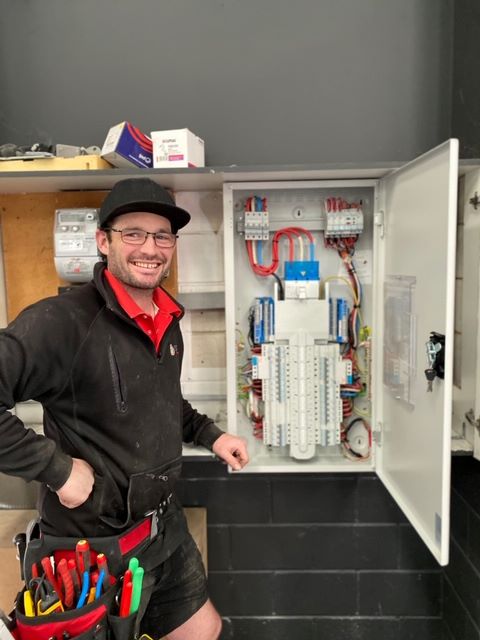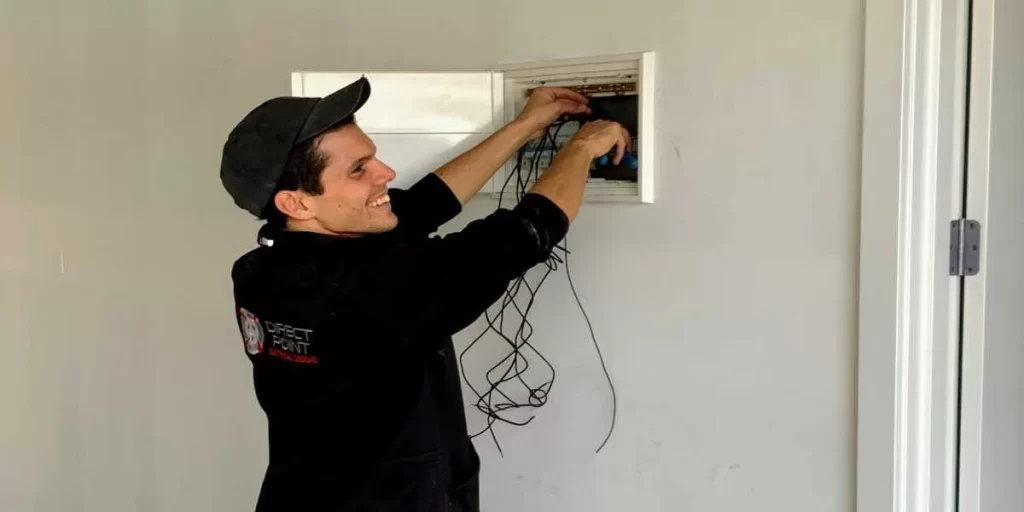When planning electrical installations for your home or commercial property, a common inquiry arises regarding the necessity of a main breaker within a sub panel. This question typically surfaces as property owners assess their options for upgrading electrical systems or incorporating new circuits to accommodate rising energy demands. Gaining a comprehensive understanding of the functions and requirements of sub panels is vital for establishing a safe, operationally effective, and efficient electrical framework.
In most scenarios, a sub panel does not necessitate a main breaker since it derives power from the main panel, which is already equipped with a main breaker that controls the overall power supply. The breaker in the main panel serves as the primary disconnect for the entire electrical system, encompassing all sub panels. Nonetheless, certain local electrical codes or specific installation criteria may require a main breaker in sub panels, especially for enhanced safety or operational convenience. It is imperative to verify your local regulations to ensure adherence and safety.
While including a main breaker in your sub panel is not a standard requirement, doing so can provide numerous advantages. It allows for a quick and simple method to disconnect power to all circuits within that particular panel without disrupting the entire electrical system. This feature is particularly beneficial during maintenance procedures or emergencies, as it enables safe isolation of specific segments of your property’s electrical network, thereby enhancing safety and accessibility in such situations.

Explore the Crucial Roles and Advantages of Sub Panels in Electrical Systems
Sub panels serve a vital function in electrical systems by facilitating efficient power distribution to specific areas or appliances within a property. They significantly improve control over circuits and enhance the overall capacity to manage electrical loads effectively. By strategically installing sub panels, property owners can optimize their electrical infrastructure to meet the diverse demands of various appliances and equipment, ensuring reliable and efficient performance throughout the property.
Delving into Sub Panels: Their Critical Functions and Advantages
A sub panel, often referred to as a subsidiary panel or distribution board, functions as an additional electrical panel that branches out from the main electrical panel. Its primary role is to act as a secondary distribution point for electricity throughout a building, providing increased flexibility and efficiency. Sub panels are typically installed to:
- Boost circuit capacity for a variety of applications and equipment.
- Isolate power supply to specific areas or devices, enhancing safety and convenience.
- Improve organization and management of the overall electrical system.
Common locations for sub panels include garages, workshops, or larger homes where the main panel may be situated far from certain areas requiring power. By integrating sub panels into the electrical infrastructure, property owners can achieve more efficient power distribution, simplifying circuit management while making it easier to access and control their electrical network.
Crucial Factors for Electrical Load Assessment Prior to Sub Panel Installation
Before embarking on a sub panel installation, it is essential to thoroughly evaluate the electrical load requirements. Key considerations include:
- The total amperage needed for the designated area or equipment.
- The number and types of circuits necessary for specific applications.
- The distance from the main panel to the selected sub panel location.
Accurately calculating the expected load is crucial to ensure that the sub panel can safely accommodate it. Typically, sub panels are available in capacities ranging from 60 to 200 amps, depending on their intended use. Matching the sub panel’s capacity to your specific electrical needs is vital for both operational efficiency and safety. Additionally, considering potential future expansions when sizing your sub panel can save time and costs, averting the need for upgrades or replacements as your electrical demands grow.

Essential Elements to Ensure Safe and Efficient Sub Panel Installation
To ensure a safe and effective installation of a sub panel, several critical factors must be addressed, including circuit breakers, adherence to regulatory standards, and the implementation of necessary safety measures. Understanding these installation requirements is paramount for establishing a compliant and secure electrical system.
Evaluating the Requirement for Circuit Breakers in Sub Panels
While it is not always mandatory for sub panels to have a main breaker, the necessity can vary based on specific factors, such as:
- The distance from the main panel: If the sub panel is located far from the main panel, a local disconnect may be essential.
- The number of circuits: Sub panels equipped with more than six breakers typically require a main breaker to improve safety.
- Local codes: Certain jurisdictions may mandate the installation of main breakers in all sub panels.
A main lug sub panel depends on the main breaker from the main panel for overcurrent protection, which is a common configuration when the sub panel is situated near the main electrical panel. Ensuring awareness of the specific needs of your installation is crucial for compliance and safety.
Understanding Regulatory Standards for Sub Panel Installations
In Australia, specific electrical standards govern the installation of sub panels, including:
- AS/NZS 3000: This standard outlines comprehensive requirements for all electrical installations.
- Maximum rating: Main breakers for sub panels must not exceed the ampacity of the feeder conductors to ensure safe operation.
- Labelling: Clear identification of the power source for the sub panel is a mandatory requirement.
Adhering to these standards is essential for ensuring safety and legal compliance. It is highly advisable to consult local authorities for specific regional requirements, and remember that all electrical work must be performed by a licensed electrician to ensure compliance and safety!

Implementing Essential Safety Protocols During Sub Panel Installations
Implementing robust safety protocols during sub panel installations is vital to mitigate electrical hazards and guarantee operational safety:
- Proper grounding: Ensure that the sub panel is effectively grounded to minimize the risk of electrical shocks.
- Adequate spacing: Maintain sufficient clearance around the panel to allow easy access and proper ventilation.
- Weatherproofing: For installations located outdoors, use weather-resistant enclosures to guard against moisture and environmental factors.
Moreover, it is critical to utilize appropriate wire sizes and types tailored to the expected load. Installing arc fault circuit interrupters (AFCIs) and ground fault circuit interrupters (GFCIs) in accordance with code requirements is also essential for ensuring safety. Regular inspections and maintenance of the electrical installation significantly contribute to ongoing safety and compliance. Always engage a licensed electrician for sub panel installations to guarantee that all safety standards are meticulously followed.
Common Inquiries Regarding Sub Panels and Main Breakers
The complexities associated with sub panels, including considerations regarding breakers, sizing, and regulations, can be daunting for property owners. Obtaining a clear understanding of the fundamental requirements is essential for ensuring a safe and compliant electrical setup that adheres to all local codes and safety standards.
Is a Main Breaker Required for Every Sub Panel?
A sub panel does not inherently require a main breaker. The necessity largely depends on its placement relative to the main panel and local electrical codes. If the sub panel is located within the same structure as the main panel, a main breaker is generally not required.
However, if the sub panel is situated in a separate building or structure, it typically must include a main breaker for safety and compliance reasons, ensuring adherence to all local regulations.
Can a Main Breaker Panel Function as a Sub Panel?
Yes, a main breaker panel can serve as a sub panel, although it may not always be the most efficient option. In this configuration, the main breaker acts as an additional disconnect point rather than the principal disconnect for the electrical system.
Choosing a panel specifically designed as a sub panel is often more cost-effective and space-efficient, providing enhanced functionality for your electrical requirements.
What Size Breaker is Appropriate for a 100 Ampere Sub Panel?
For a 100 ampere sub panel, it is standard practice to use a 100 ampere breaker in the main panel to supply it. This breaker should correspond with the sub panel’s rating to ensure optimal protection and performance, providing a dependable power supply.
Additionally, the wire size must also be adequate for managing a 100 ampere load, ensuring that the entire electrical system operates safely and effectively.
What Regulations Govern Electrical Sub Panels?
Electrical sub panel regulations can differ by region, but they primarily focus on safety and accessibility. Key regulations typically include:
- Proper grounding and bonding procedures to enhance safety.
- Correct wire sizing to effectively accommodate anticipated loads.
- Adequate spacing around the panel to ensure accessibility and safety.
- Clear labelling of all circuits within the panel for improved management.
Always consult local codes and consider professional installation to ensure complete compliance with all regulations, fostering a safe electrical environment.
What is the Capacity Limit for a Sub Panel Connected to a 200 Ampere Main Panel?
A sub panel linked to a 200 ampere main panel does not have a fixed capacity limitation. The size of the sub panel is contingent upon various factors, including:
- The available capacity in the main panel to support additional loads.
- The intended load requirements for the sub panel based on its specific use.
- The wire size utilized between the panels, ensuring it can safely handle the load.
It is entirely feasible to install a 100 or 150 ampere sub panel, provided that the main panel has enough spare capacity to accommodate it, allowing for flexibility to meet future needs.
How to Accurately Size a Breaker for a New Sub Panel Installation?
To effectively size a breaker for a new sub panel, follow these steps:
- Calculate the total load that the sub panel is expected to support, factoring in all connected devices.
- Select a panel rated for that load or higher to ensure safety.
- Choose a breaker in the main panel that matches the sub panel’s rating for optimal performance.
It is prudent to consider future expansion needs when sizing the panel. Frequently, installing a slightly larger panel than currently needed can provide additional flexibility to accommodate future electrical demands, enhancing the adaptability of your system.
The Article: Does a Main Breaker Need to Be in a Sub Panel? first appeared on https://writebuff.com
The Article Main Breaker Requirements for Sub Panels Explained Was Found On https://limitsofstrategy.com


It’s interesting how often the topic of sub panels comes up when discussing electrical system upgrades. I recently went through a similar process when renovating my home and had to consider not just the technical specifications but also the safety regulations in my area. It’s true that many people overlook the importance of understanding local codes until they’re knee-deep in a project.